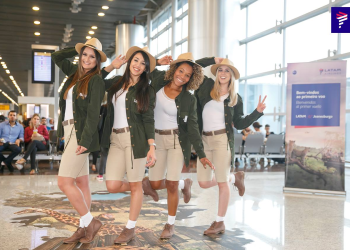Mastering public transportation in a foreign country can be a daunting task for travelers, but with the right knowledge and preparation, it can also be a rewarding experience. In this beginner’s guide, we’ll delve into essential tips and strategies for navigating public transportation abroad like a pro.
Researching Transportation Options
Before setting out on your journey, take the time to research the public transportation options available in your destination. Familiarize yourself with the types of transportation systems, such as buses, trains, trams, and subways, and learn about their coverage areas and operating hours.
Understanding Ticketing Systems
Public transportation systems around the world often have different ticketing systems and fare structures. Take the time to understand the various ticket options available, such as single rides, day passes, or reloadable cards, and familiarize yourself with how to purchase tickets from kiosks, vending machines, or ticket counters.
Navigating Stations and Stops
Navigating stations and stops can be overwhelming, especially in bustling urban areas. Take the time to study station layouts and become familiar with the locations of entrances, exits, ticket gates, and platforms. Use maps and signage to guide you, and don’t hesitate to ask station staff or fellow travelers for directions if needed.
Boarding and Exiting Vehicles
When boarding and exiting vehicles, it’s essential to follow proper etiquette and ensure your safety. Wait patiently in line and allow other passengers to exit before boarding. Once inside, move to the center of the vehicle to make room for others. When exiting, be mindful of your surroundings and watch for approaching stops.
Managing Transfers
Transferring between different modes of transportation can be confusing, but with proper planning, it can be seamless. Pay attention to transfer points indicated on maps and signage, and allow yourself plenty of time to make connections. If you’re unsure, don’t hesitate to ask station staff or fellow passengers for assistance.
Dealing with Language Barriers
Navigating public transportation in a foreign country can be challenging, especially if you don’t speak the local language. Learn basic phrases for asking directions, purchasing tickets, and inquiring about schedules. Consider using translation apps or carrying a phrasebook to help bridge the language gap.
Safety and Security Considerations
While public transportation is generally safe, it’s essential to stay vigilant, especially in crowded areas. Keep your belongings secure and be wary of pickpockets and scams. Stick to well-lit and populated areas, especially when traveling at night, and trust your instincts if something feels off.
Accessibility and Special Considerations
Travelers with disabilities or special needs may encounter unique challenges when navigating public transportation. Research accessibility options in advance and inquire about accommodations such as ramps, elevators, or priority seating. If traveling with luggage or strollers, be mindful of space constraints and plan accordingly.
Budgeting for Transportation Costs
Transportation expenses can quickly add up, especially in major cities with extensive public transportation networks. Estimate your transportation costs in advance and budget accordingly. Look for budget-friendly options such as day passes or multi-ride tickets to save money on fares.
Planning for Peak Times and Rush Hours
Peak times and rush hours can significantly impact your travel experience, with crowded trains and buses making navigation more challenging. Plan your travel times accordingly to avoid peak hours whenever possible, or consider alternative routes or modes of transportation to bypass congested areas.
Adapting to Cultural Norms
Cultural norms and behaviors can vary widely from country to country, and it’s essential to adapt to local customs when navigating public transportation. Respect personal space, observe queueing etiquette, and be mindful of local customs and behaviors to avoid unintentionally causing offense.
Utilizing Technology for Navigation
Technology can be a valuable tool for navigating public transportation abroad. Download smartphone apps that provide real-time transit information, such as schedules, routes, and service alerts. Use GPS and navigation tools to help you find your way around unfamiliar cities and neighborhoods.
Seeking Assistance from Locals
When in doubt, don’t hesitate to ask for help from locals. Most people are happy to assist travelers with directions or advice on navigating public transportation. Strike up a conversation with fellow passengers or approach station staff for insider tips and recommendations.
Conclusion
Navigating public transportation abroad may seem daunting at first, but with a little preparation and know-how, it can be a rewarding and efficient way to explore new destinations. By familiarizing yourself with transportation options, understanding ticketing systems, and staying alert to your surroundings, you’ll be navigating foreign transit systems like a seasoned traveler in no time.

FAQs After The Conclusion
- How do I know which ticket to purchase for public transportation?Research the available ticket options in advance and consider factors such as the duration of your stay, the frequency of your travel, and the coverage area of the ticket. Opt for a ticket that offers the best value for your needs, whether it’s a single ride, day pass, or reloadable card.
- What should I do if I get lost while using public transportation abroad?Stay calm and don’t panic. Refer to maps and signage for guidance, and don’t hesitate to ask for help from station staff or fellow passengers. Carry a portable GPS device or use a navigation app on your smartphone to help you find your way back on track.
- How can I avoid pickpockets and scams while using public transportation?Keep your belongings secure at all times and be aware of your surroundings, especially in crowded areas. Avoid displaying valuables openly and keep your wallet, phone, and passport in a secure location such as a front pocket or crossbody bag. Trust your instincts and avoid engaging with suspicious individuals.
- What should I do if I encounter a language barrier while using public transportation?Learn basic phrases in the local language for asking directions, purchasing tickets, and inquiring about schedules. Use gestures or visual aids to communicate if necessary, and consider using translation apps or carrying a phrasebook as a backup. Don’t be afraid to ask for help from station staff or fellow passengers.
- How can I navigate public transportation with limited mobility or special needs?Research accessibility options in advance and inquire about accommodations such as ramps, elevators, or priority seating. Contact transportation authorities or service providers ahead of time to arrange assistance if needed. Consider alternative modes of transportation or routes that better accommodate your needs.
- Are there any cultural differences I should be aware of when using public transportation abroad?Cultural norms and behaviors can vary widely from country to country. Be mindful of local customs such as queueing etiquette, personal space, and noise levels. Observe how locals behave and adapt your behavior accordingly to avoid unintentionally causing offense.
- How can I save money on transportation costs while traveling abroad?Look for budget-friendly options such as day passes, multi-ride tickets, or tourist discount cards that offer unlimited travel within a specified period. Consider walking or cycling for short distances, or using ride-sharing services for longer journeys. Plan your travel times to avoid peak hours and congested routes whenever possible.
- What should I do if I encounter delays or disruptions while using public transportation abroad?Stay informed about service updates and disruptions by checking transit agency websites or social media channels. Allow yourself extra time for travel and consider alternative routes or modes of transportation if available. Stay patient and flexible, and remember that delays and disruptions are often part of the travel experience.









